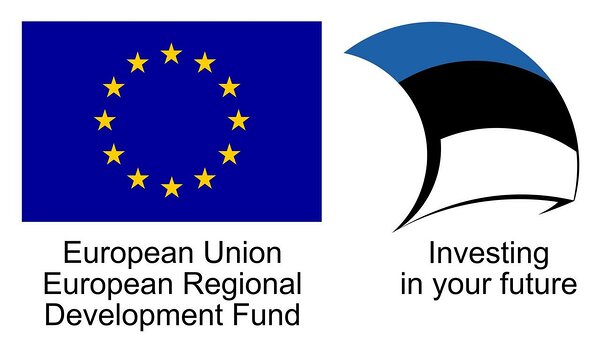For Telecommunications Service Provider
While offering telecommunication services, it is important to have knowledge of the principles of radio waves propagation and the characteristics of different antenna systems in order to perform different radio measurements, and to know the problems associated with electromagnetic compatibility.
Estonian Aviation Academy is offering several training courses in this field. The specialists of the academy are also able to offer support when it comes to planning the measurements, and the equipment in the communication and navigation lab of the academy can be used to conduct different measurements for radio installations evaluation purpose. It is also possible to order a GNSS receiver testing service.
Training Course - Antennas and Propagation of Radio Waves
The participant will acquire in-depth knowledge on the principles of radio wave propagation in different environments, how to measure the main parameters of antennas and antenna feeders, will obtain knowledge on the propagation models of radio waves and the main solutions in the antenna feeder system main components.
This course is meant for specialists whose work is related to planning, installing and maintaining of radio transmitter and receiver systems.
For additional information or price offer please contact trainings@eava.ee
Training Course - Radio Communication and Measurements
The participant will acquire skills for performing radio measurements, including the evaluation of radio channel quality, antenna and radio transmitter and receiver parameters, problems associated with electromagnetic compatibility etc.
The course will take place in the communication and navigation system lab of the Estonian Aviation Academy, where the participants have the chance to perform radio measurements using the lab equipment.
This course is meant for specialists whose work is related to planning, installing and maintaining of radio transmitter and receiver systems.
For additional information or price offer please contact trainings@eava.ee
Training Course - Electromagnetic Compatibility in Radio Communication
The participant will get an overview of the main problems in the field of electromagnetic compatibility, what type of interference exists, how they affect and what the sources are. The course gives basics on how to take into account electromagnetics incompatibility issues in the planning phase, how to bring their influence to a minimum during installation, and how to protect the functioning system from later interference occurings.
During the course, the participants will learn the methods of measuring interference and necessary instruments, and some test measurements will be performed.
This course is meant for specialists whose work is related to planning, installing and maintaining of radio transmitter and receiver systems.
For additional information or price offer please contact trainings@eava.ee
Training Course - Information Systems Security in Air Traffic Services
Modern air traffic management infrastructure is based on data processing systems and data networks. From the viewpoint of air traffic safety and a company’s business processes, it is of utmost importance to secure the integrity, confidentiality and accessibility of data handled by the systems.
This training will handle the major threats to data security; safety culture and cyber hygiene; the motivation and methods of potential attackers; the structure of data security models; security protocols used in data communications and IT systems, identification of threats and countermeasures to stop cyber-attacks and management systems for keeping the information security risks under control.
This course is meant for both administrators of data systems and for IT managers.
For additional information or price offer please contact trainings@eava.ee
GNSS receiver testing
GNSS simulation makes it possible to plan integration into devices and enable their precise positioning and optimisation. When developing various devices based on satellite signals, such as GPS, it must be ensured that they can work without interruption. Whether a smartwatch or a space shuttle is being built, a GNSS simulator is an irreplaceable device for testing.
The simulator imitates the environment of a GNSS receiver on a dynamic platform, modeling the movement of objects, signal properties, atmosphere and other effects, and causing the receiver to navigate according to the parameters of the test scenario.
Advantages of GNSS simulator:
• a thorough and realistic description;
• user-friendliness and simplicity;
• modern technology.
With the simulator, it is possible to simulate GPS, GLONASS, Galileo and BeiDou signals in frequency channels L1, L2 and L5.
For additional information or price offer please contact rdi@eava.ee
Assessment of Radio Installations
In order to secure a constant and strong environment for radio communication, it is important to perform the assessment of radio station installations. The most efficient way is to perform numerous measurements, and to use the results as a base for radio arrangement quality evaluation. The equipment used for performing those measurements are oscilloscope, power meter, spectrum analyser, signal generators and by agreement with the customer, other instruments for performing more complex measurements if required.
The communication lab of the Aviation Academy offers numerous options for performing those measurements.
For radio installation assessment, it is possible to perform the following:
to measure the quality of electrical supply and earthing;
to measure the attenuation of cables and connectors;
to find the best frequency range of the antennas and to measure matching with feeder;
to measure the mutual transfer and mutuality of antennas;
to measure the sensitivity of the receiver;
to measure the frequency characteristics of the receiver;
to measure the carrier frequency parameters and output power of the transmitter;
to measure the non-linear distortion of receivers and transmitters;
to measure the electromagnetic field strength at the receiving point;
to identify and evaluate interference caused by external sources in a radio communication channel;
to identify and evaluate electromagnetic disturbance caused by radio installations.
A report will be made based on the results according to the needs of the customer.
For additional information or price offer please contact rdi@eava.ee


